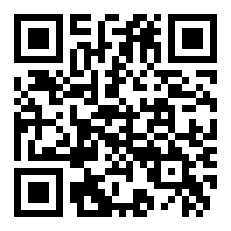Use of Traditional Eye Medications in Kosofe Local Government Area of Lagos State, Nigeria
Community Ophthalmology
Abstract
Introduction: Traditional medicine comprises unscientific knowledge developed over generations within various societies before the era of modern medicine.1 It may include formalized aspects of folk medicine, for example, long standing remedies passed on and practiced by lay people1 Traditional healers tend to use substances that cause irritation and pain. Such substances may be acidic, alkaline resulting in ocular burns. No particular attention is paid to mode of action, concentration or sterility as most of these concoctions are made without regard for hygiene using contaminated water, local gin, saliva or even urine2,3 The Nigerian National blindness and Visual impairment survey 2005-2007 found that the use of traditional eye medication for measles/Vitamin A deficiency accounted for a percentage of those that had corneal scarring.4
Methods: The study was a population based descriptive cross-sectional study, which was carried out in Kosofe Local Government Area of Lagos State from July to September 2012. The target population were adults who were 18 years old and above and had been resident in the community for at least 6 months. Using multi-stage sampling technique, participants were selected from urban and rural wards of the local government area. Information was collected with the use of questionnaires.
References
W i k i p e d i a – w w w . w i k i p e d i a . c o m . Traditional medicine. Cited 30th November 2012
Osahon AI. Consequences of traditional eye medication in U.B.T.H, Benin City. Nigerian J Ophthalmol. 1995; 3:51
Mselle J. Visual impact of using traditional medicine on the injured eye in Africa. Acta Trop 1998; 70:185-192.
Dineen B, Gilbert CE, Mansur R, Fatima K, Abdull MM, Abubakar T, Ezelum CC, Gabriel E, Elhassan E, Abiose A, Faal H, Jiya JY, Ozemela CP, Lee PS, Gudlavalleti MVS. The Nigerian national blindness and visual impairment survey: Rationale, objectives and detailed methodology. BMC Ophthalmology 2008, 8:17
Nigeria demographic and Health survey 2008, Page 12. (cited 5th November 2012)
Health Profile Nigeria. http://www. worldlifeexpectancy.com/country-healthprofile/nigeria. cited 5th November 2012.
Nwosu SNN, Obidiozor JU. Incidence and risk factors for traditional eye medicine use among patients at a tertiary eye hospital in Nigeria. Niger J Clin Pract 2011 OctDec;14(4):405-407.
Eze BI, Chuka Okosa CM, Uche JN. Traditional eye medication use by newly presenting ophthalmic patients in a Teaching Hospital in South Eastern Nigeria, Sociodemographic and clinical correlates. BMC Complementary and Alternative Medicine 2009, 9:40.
Ukponmwan CU, Momoh N. Incidence and complications of traditional eye medications in Nigeria in a teaching hospital. Middle East Afr J Ophthalmol 2010; 17:315-319.
Omolase CO, Afolabi AO, Mahmoud AO, Omolase BO. Ocular self-medication in Owo, Nigeria. Nig. J Postgrad Med 2008; 1(1): 8-14.
Mutombo TK. Assessing the use of traditional eye medication in Bukavu district eye hospital, Congo. J Com Eye Health. 2008; 21 (68):64-66.
Downloads
Published
How to Cite
Issue
Section
License
Copyright (c) 2023 Transactions of the Ophthalmological Society of Nigeria

This work is licensed under a Creative Commons Attribution-NonCommercial-NoDerivatives 4.0 International License.

















